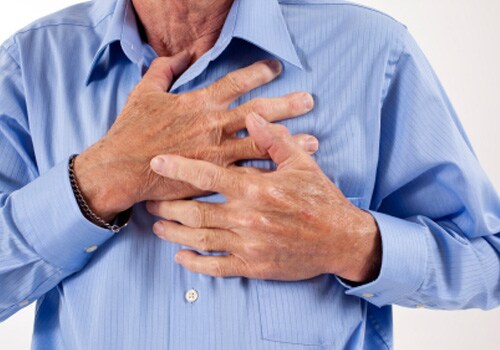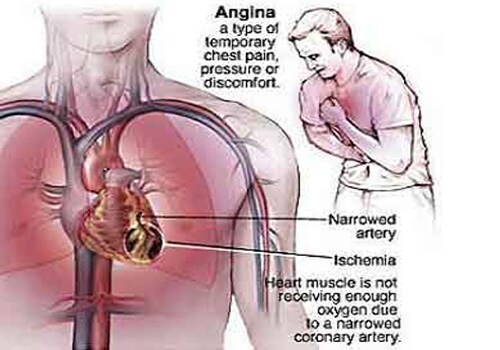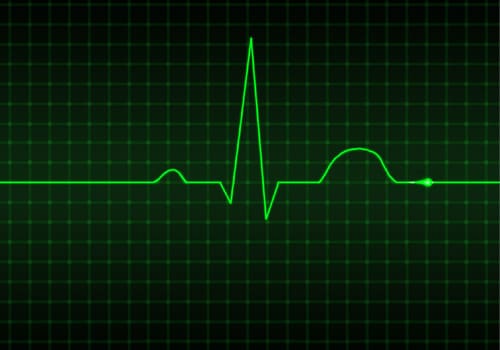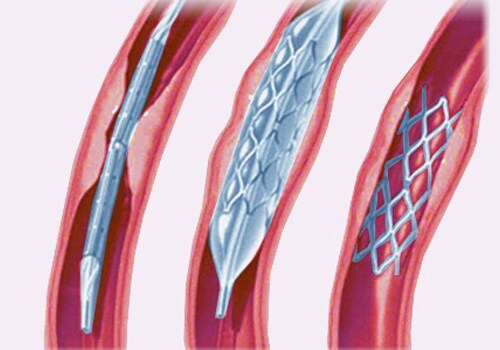-

What is angina?
Angina (also called angina pectoris) is chest discomfort, caused by reduced oxygen supply to the heart muscle, in relation to its needs. Angina can occur in men and women of any age but it is more common among the middle-aged and elderly.
-

How does it occur?
The following conditions affect the blood supply of the heart leading to angina:
- Coronary Artery Disease or Coronary Heart Disease (CAD/CHD): This is the most common cause of angina in which the walls of the arteries carrying blood to the heart become lined with fat deposits. This restricts the blood flow, and less oxygen reaches the heart muscle.
- Spasm of the coronary artery: A transient narrowing of the coronary artery causes blood to stop flowing through the artery briefly. When the spasm is over, the artery and blood flow returns to normal. Abnormal heart valves and rhythms reduce the blood flow to the heart.
- Anaemia: The levels of red blood cells or haemoglobin (the oxygen-carrying chemical in the blood) are too low.
- Polycythemia: An excess of red blood cells causing the blood to thicken.
- Diseases of the thyroid gland: Excess as well as decreased formation of the thyroid hormone changes the heart rate and rhythm and leads to reduced blood supply to the heart muscle.
- Coronary Artery Disease or Coronary Heart Disease (CAD/CHD): This is the most common cause of angina in which the walls of the arteries carrying blood to the heart become lined with fat deposits. This restricts the blood flow, and less oxygen reaches the heart muscle.
-

What are the symptoms?
The symptoms of angina include chest pain that feels like strangulation with tightness or heavy pressure on the chest. The pain usually starts in the chest and spreads to the throat, arms (usually the left arm), and jaws, and between the shoulder blades; the pain can also spread to the stomach and feel like an ulcer or indigestion. There may also be nausea, sweating, light-headedness and difficulty in breathing.
-

How is it diagnosed?
In case of occasional symptoms, the doctor takes a detailed history of the type, frequency and intensity of symptoms as well as the factors that induce and relieve it. Examination of the pulse, blood pressure, neck, abdomen, lungs and heart is carried out. An electrocardiogram (ECG) will record the heart rate and rhythm and any other abnormality. A treadmill or stress exercise test is carried out, if required, at a suitable time. In emergency situations, with sudden chest pain, the doctor will take the medical history, examine the patient and usually suggest hospital admission, for observation and treatment. Here, the ECG is continuously monitored. Blood examination and other tests are done to look for damage to the heart muscle due to a possible heart attack.
-

What is the treatment?
Lifestyle modification: When angina is caused by coronary artery disease, treatment involves following a healthy lifestyle. This includes avoiding smoking, maintaining normal weight and regular exercise. The blood pressure, blood cholesterol and blood sugar will also need to be reduced, if high.
Medicines: Often the symptoms of angina can be controlled by medication. Several types of medicines are available, including beta-blockers, nitrates, and calcium channel blockers. All patients of angina must take aspirin and statin group of drugs under medical supervision.
Mechanical interventions: Blocked arteries can be treated with two types of interventions to increase the blood supply due to blocked arteries supplying the heart muscle. These are - balloon angioplasty and coronary bypass graft surgery. Balloon angioplasty is a simple non-surgical procedure in which a tube with an inflatable balloon tip is inserted into the blockage in the artery. When inflated, the blockage is reduced almost to nil and the blood flows without hindrance through it. In many patients, a hollow cylinder made of steel or any other material is also placed at this site at the same time. This reduces the chance of recurrence of the blockage (which occurs usually over the next six months), from about 30% to 20%. Special stents coated with drugs like sirolimus and paclitaxel can reduce the change of recurrence to less then 5%. This procedure does not require open-heart surgery and the patient is discharged within 1-2 days. Coronary bypass surgery is an open-heart surgery. The blocked coronary artery is bypassed using grafts from the patient’s own arteries or veins. This procedure requires a longer hospital stay and considerable recovery time. Modern techniques of Open Heart Surgery have made it safer and with a shortened recovery time. -

How can angina be prevented?
The following guidelines along with the doctor’s advice should be followed:
- A regular exercise program under the doctor’s supervision.
- A supervised weight-loss program in over-weight persons.
- Eat a healthy, well-balanced diet and avoid foods high in fat and cholesterol.
- The blood pressure should be checked regularly and kept as close as possible to 120/80mmHg.
- Get relaxed sleep at night.
- Avoid stress.
- Always carry the medicines prescribed by the doctor along with the prescription.
- Take sublingual nitroglycerin/isosorbide (or the emergency treatment for angina as advised by the doctor) if stopping an activity doesnt help the pain, or if the pain occurs at rest.
- Follow-up regularly with the doctor.
- A regular exercise program under the doctor’s supervision.


















